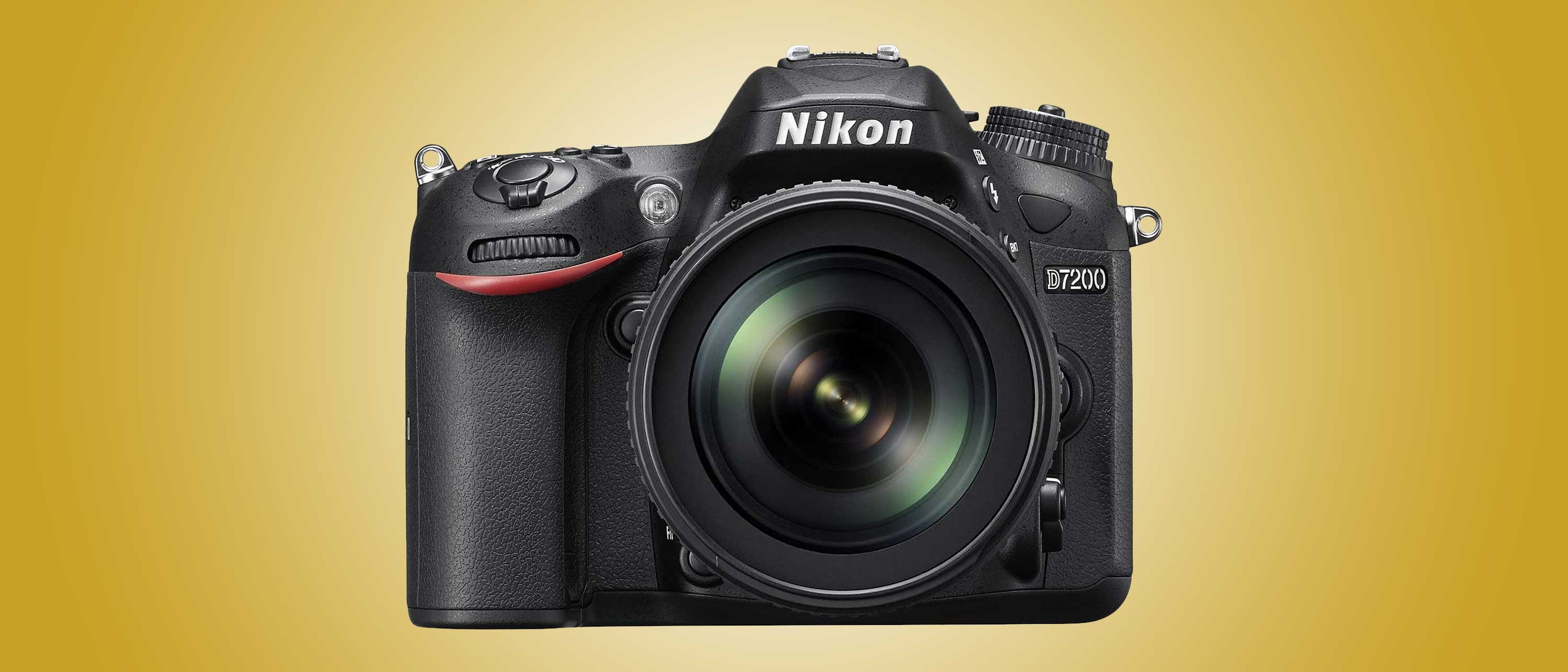Space Verdict
The D7500 is a real celebration of affordability and high-quality features that, for now, keep up with crop sensor mirrorless bodies without a hitch
Pros
- +
Excellent image noise handling in its class
- +
Great button layout, feels professional
Cons
- -
Stills resolution isn’t anything special
- -
Only one SD card slot
Why you can trust Space.com
The D7500 is Nikon’s second-best DX body DSLR packed with the professional quality components seen in the flagship DX camera, the D500. The D7500 is one of the best DX bodies they’ve ever made with it likely to be one of the last DX DSLRs produced as everything slowly turns mirrorless. In size and stature, it sits between the smallest entry-level crop sensor bodies such as the D3500, and the entry-level full-frame bodies like the D780 with the D7500 weighing in at 1 lb 9.4 oz with dimensions of 5.4 x 4.1 x 2.9-in. The fact it shoots only 20.9 megapixel stills is its only drawback, otherwise backed up by a beefy 4K UHD 30 frames per second video capture and time-lapses of the same resolution, too. It has only one SD card slot, but it’s compatible with SD, SDHC, and SDXC UHS-I compliant cards.
A healthy ISO sensitivity range makes this camera good at a lot of things, especially astrophotography and low light photography when combined with an appropriate F-mount lens. It also autofocuses down to -3EV which is nothing to write home about these days but was perfectly respectable when it was released back in 2017. ISO sensitivity ranges from 100 - 51,200 (expanded to 50 - 1,640,000). A fast 8fps burst speed, combined with a big, bright touch-sensitive screen makes this a do-all camera ideal for the generalist. Photographers who like the tradition will adore the optical viewfinder which has a 0.94x magnification and nearly 100% coverage of the frame making it easy for photographers to see the scene in front of them.
Not sure if the Nikon D7500 is right for you? Why not check out our roundup of the best Nikon cameras, or thumb through the wide selection of the best cameras for photography and video. If you need a lens to go with that have a look at our best lenses for astrophotography guide or choose a camera, especially for astro with our guide to the best cameras for astrophotography.
Nikon D7500 review: Design
- Comfortable grip feels secure in the hand
- Good button layout and use of space on the body
- Large, clear, rear-tilting touch-sensitive screen
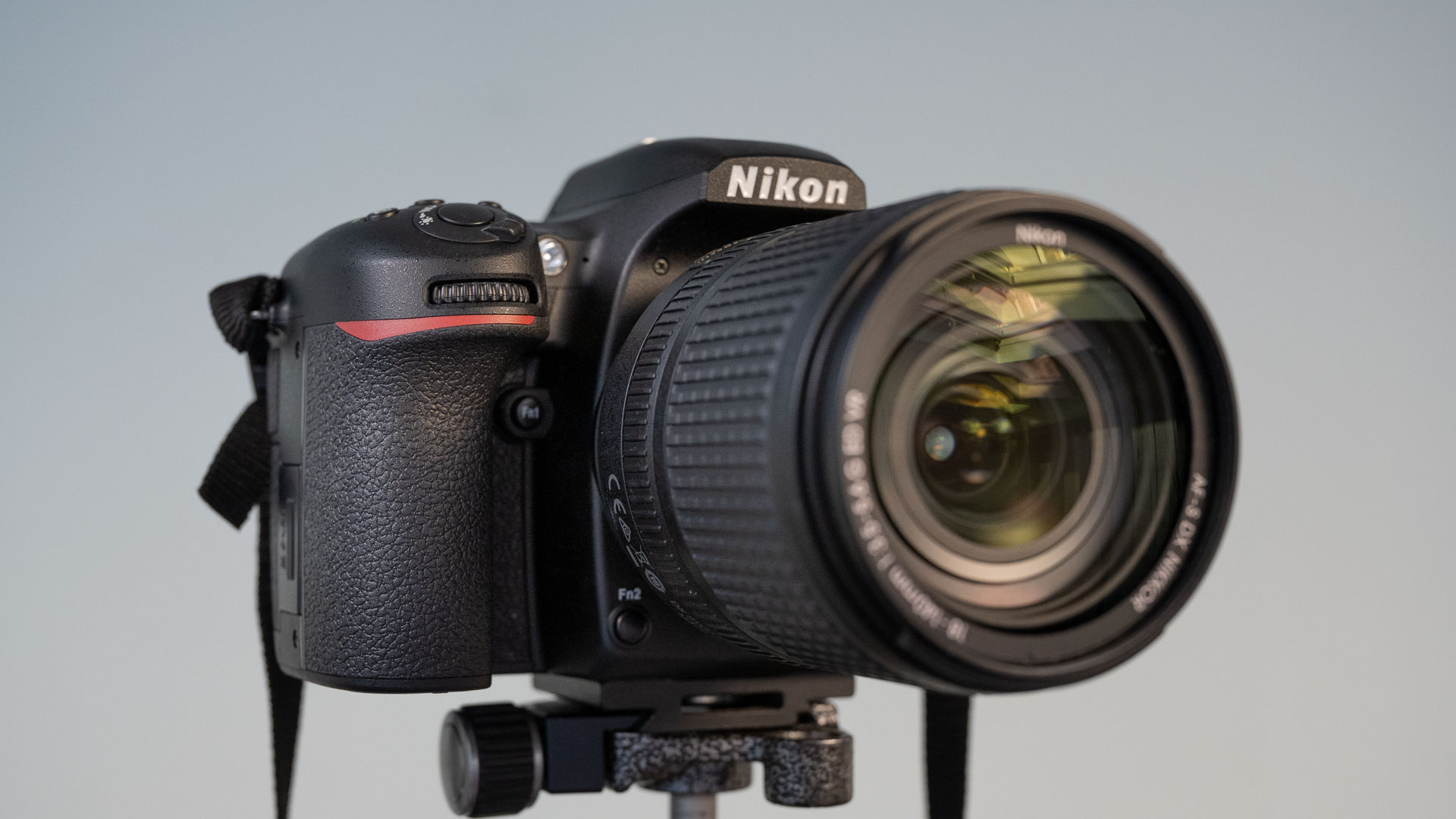
Crop sensor camera bodies are generally designed for beginners and those new to photography and are designed to cut cost, drop features, and save space. However, the D7500 is Nikon’s second-best DX (crop sensor) body and as such it doesn’t feel pared-back but rather lovingly pieced together. The grip is solid and deep which gives a legitimate professional camera feel when using it, much better than other crop sensor bodies which feel more like handling a child’s toy.
The use of space on the camera is something that stands out from the cheaper DX bodies. On the rear a row of buttons flanking the left-hand side mirror the design of full-frame bodies and all commonly used controls are within easy reach while shooting.
At a glance, you’d be forgiven for thinking this was an entry-level full-frame Nikon camera since the buttons, mode dial, ISO button, and command dials are all in the usual place when compared to more expensive models. Though, the fact it has just one SD memory card slot does make it feel like a model aimed at beginners, as professionals often prefer two card slots for automatic photo and video backup.
As a DSLR it has an optical viewfinder which is surprisingly large and bright. With 0.94x magnification and covering nearly 100% of the frame, it’s easier to compose scenes because you can see everything in front of you. The rear touch-sensitive screen is large at 3.2 inches and tilts up and down to aid with awkward camera positions whether shooting handheld or on a tripod.
Nikon D7500 review: Functionality
- High 8FPS stills burst speed
- 4K UHD 30 frames per second maximum video recording
- Touch-sensitive rear screen is fast and easy to use
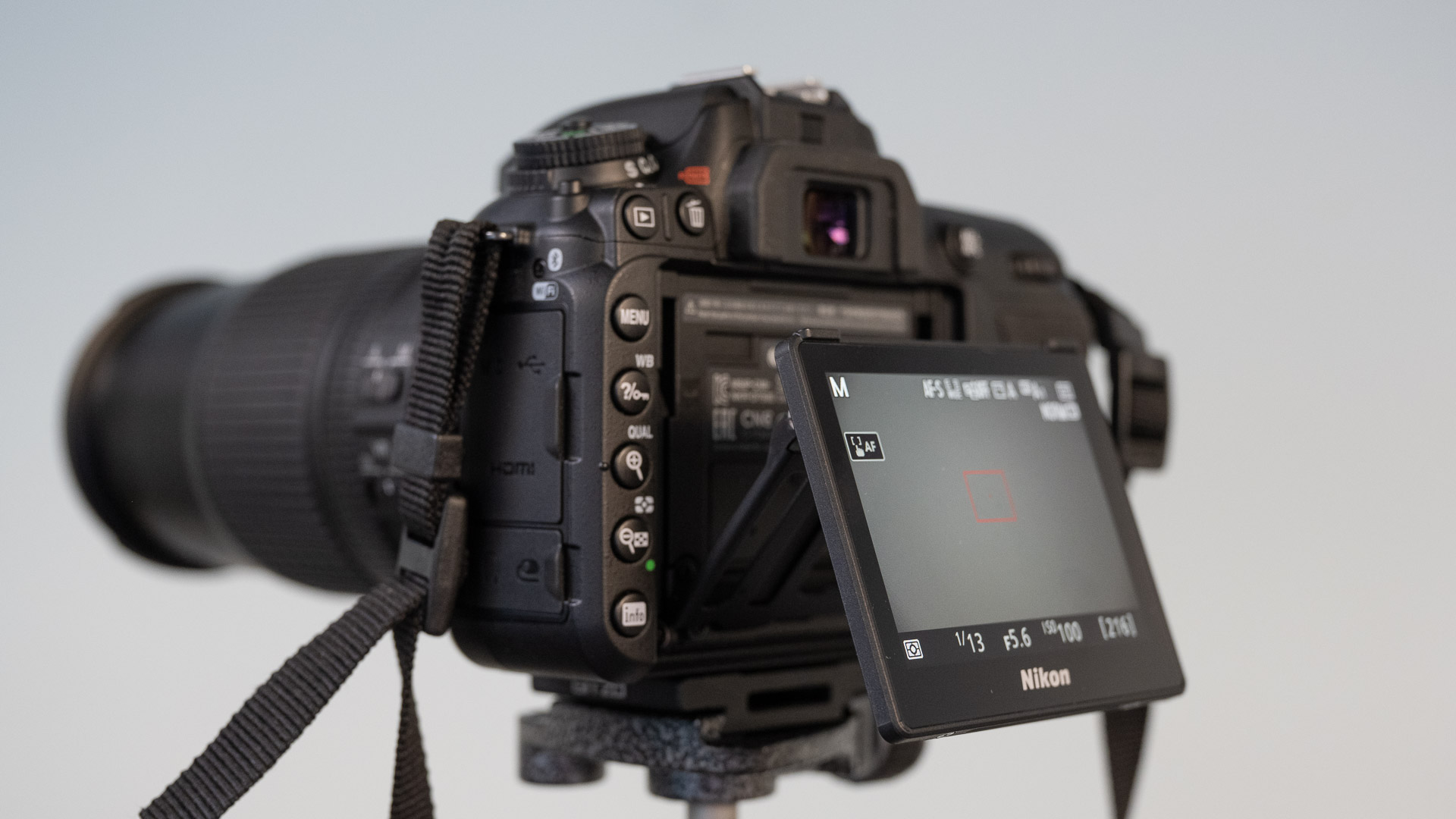
Nikon is clearly trying to reach a wide audience with the D7500 by making it strong in a variety of areas. It should even be able to keep up with fast-paced action thanks to its ability to shoot full-resolution stills photos at 8fps. Not only this but the D7500 keeps shooting at this speed to a maximum of 50 RAW (NEF) or 100 JPEG images in a single high-speed burst.
Autofocus is kept in check with the 51 focus points (including 15 cross-type sensors), utilizing TTL phase-detection for accurate results. But it’s a little disappointing to see that the D7500 has so few focus points here, especially when compared to the D500 which has the same image sensor and processor but features a whacking 153 focus points. So while it’ll still work for wildlife and sports, there is a better APS-C Nikon body for shooting these specific subjects.
The impressive specifications don’t stop at stills photos though, because the camera shoots 4K UHD 30p which is more than enough for the average shooter that wants to capture detailed videos. Video mode is easily switched to via the toggle switch surrounding the Live View button on the rear of the device and a helpfully placed red record button next to the shutter release relies on the muscle memory from shooting stills.
The rear screen is immensely useful for composition. As it tilts forward and back it can step out of the camera body far enough to make shooting from down low, or up high relatively easy. No more laying on your belly trying to shoot the flowers, the D7500’s screen simply tilts up and out so you can continue to shoot on foot. It’s more sophisticated than previous iterations too, capable of selecting menus, changing autofocus, swiping between images and videos, or altering camera settings using the touch-sensitive surface.
Nikon D7500 review: Performance
- The D7500's ability to shoot astrophotography is excellent for a DX body
- Low light capability and ISO handling is impressive
- Time-lapses in 4K UHD resolution provide improved detailed capture
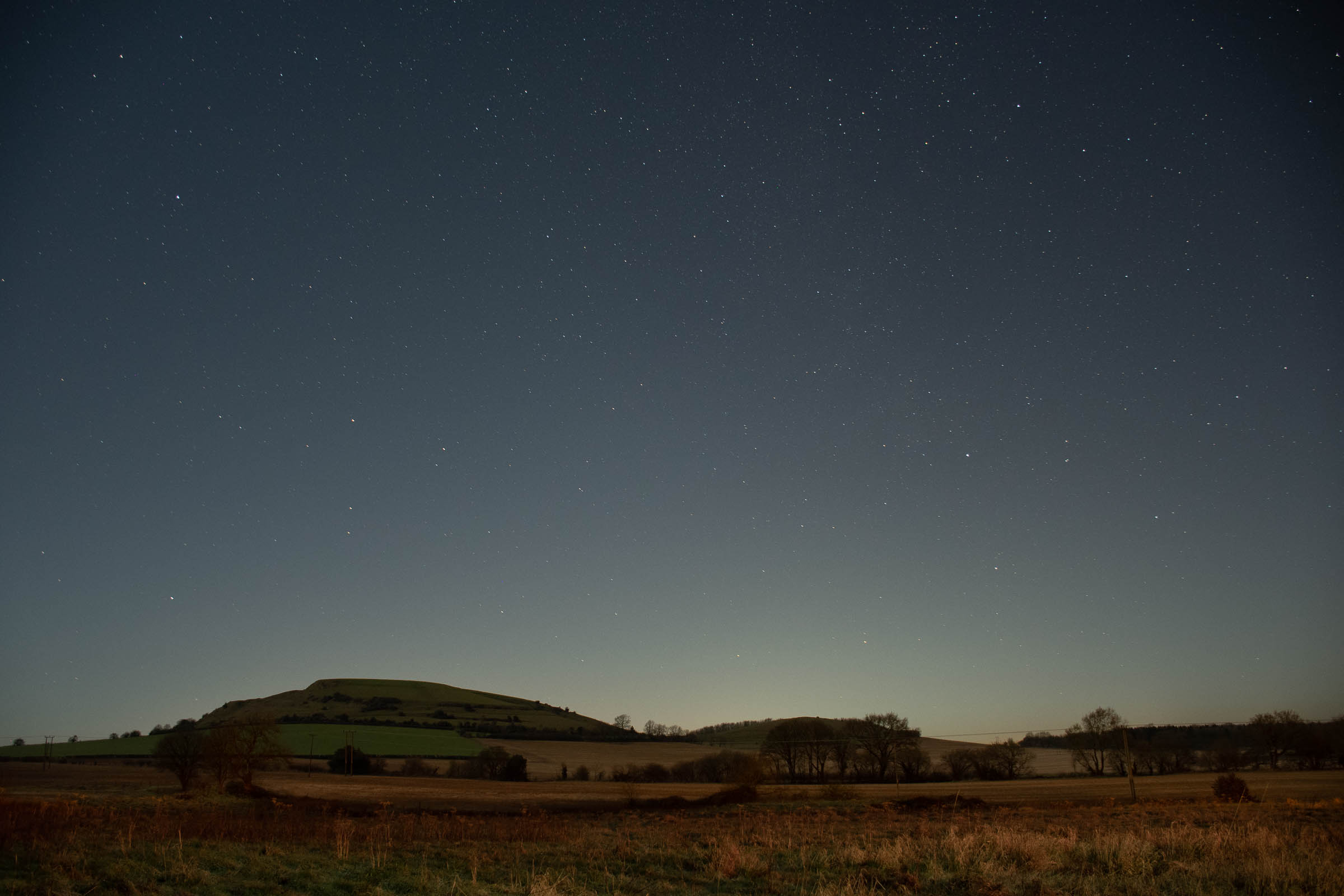
Kit lens: AF-S DX NIKKOR 18-140 VR
Best wide lens: AF-S DX NIKKOR 35mm F/1.8G
Best zoom lens: AF-P DX NIKKOR 70-300mm f/4.5-6.3G ED VR
Spare battery type: Rechargeable Li-ion EN-EL15a
Memory card: SanDisk Extreme SD UHS-I 32GB
Most of the time we’d recommend a full-frame camera to capture the finest detail when it comes to astrophotography. That’s mainly because of the larger real estate a full-frame image sensor offers to soak up all that star light. But we found the D7500 to be more than ample for capturing images of the stars, the moon, and even the odd galaxy.
Pushing the ISO high does bring some image noise with it, which is to be expected in any camera, not just a DSLR in this class, but we were happy to find that the high ISO image noise was well handled. It was uniform across the frame, didn’t favor highlights or shadows, and stayed relatively under wraps until it reached the mid-to-late thousands. It does suffer a little from color noise though, with some interference when shooting single stills, but this can be remedied from a touch of noise reduction in your chosen image editing software.
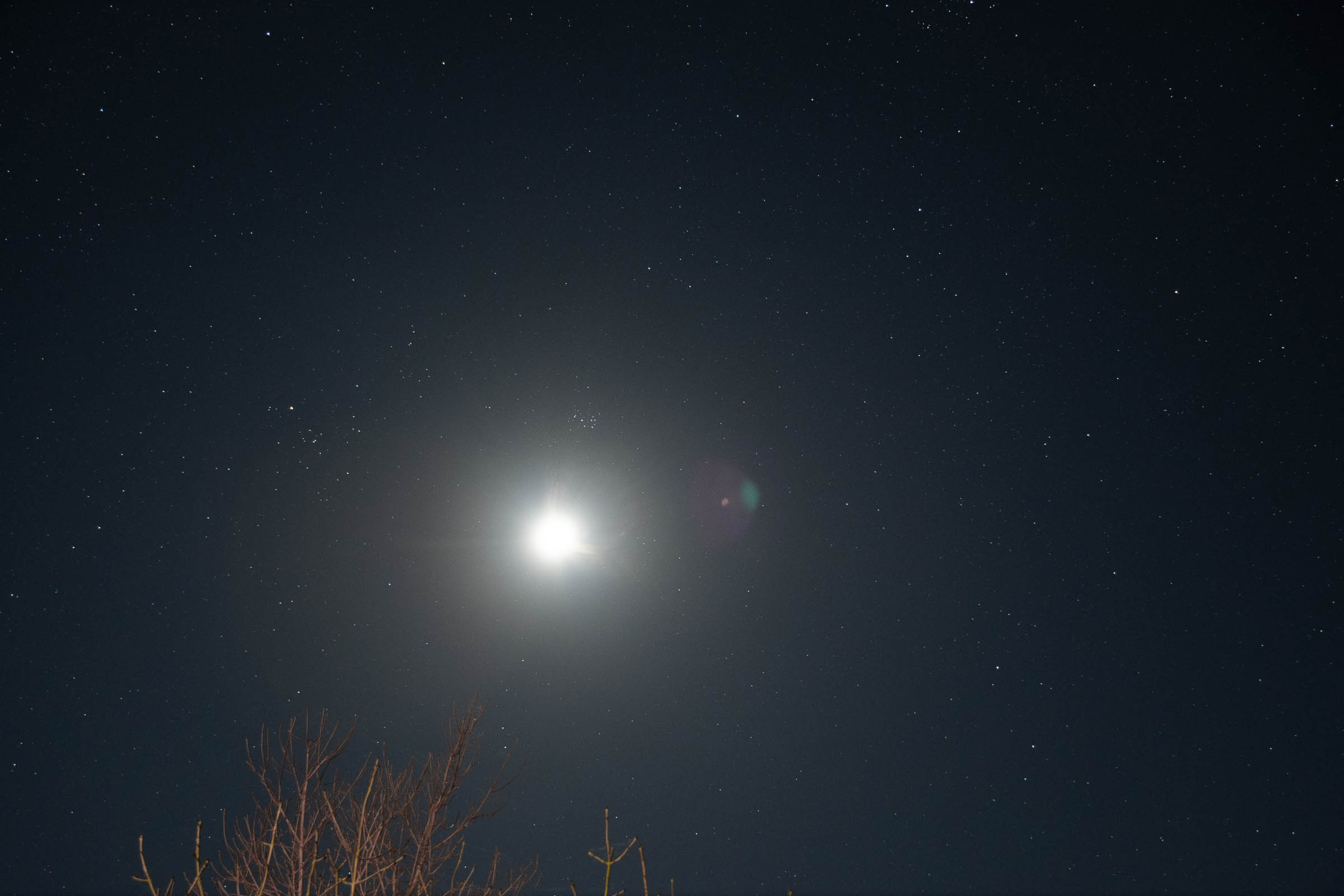
Strangely, we found this camera to perform better when it came to composing and shooting in low light than Nikon’s mirrorless FX camera the Z 5. The optical viewfinder came in handy to set a rough composition in dark settings once our eyes had adjusted and the rear screen had a helpful exposure preview effect that sped up focusing on the stars.
The D7500 even has a time-lapse function that offers 4K UHD resolution, matching its video specs. This is great to see as it adds detail to an area where beginners would find it difficult to create a time-lapse manually and perhaps would rather have the camera piece together a video for them, instead. It also keeps video editing workflow straightforward, without having to over or undersample footage to get the resolution matching.
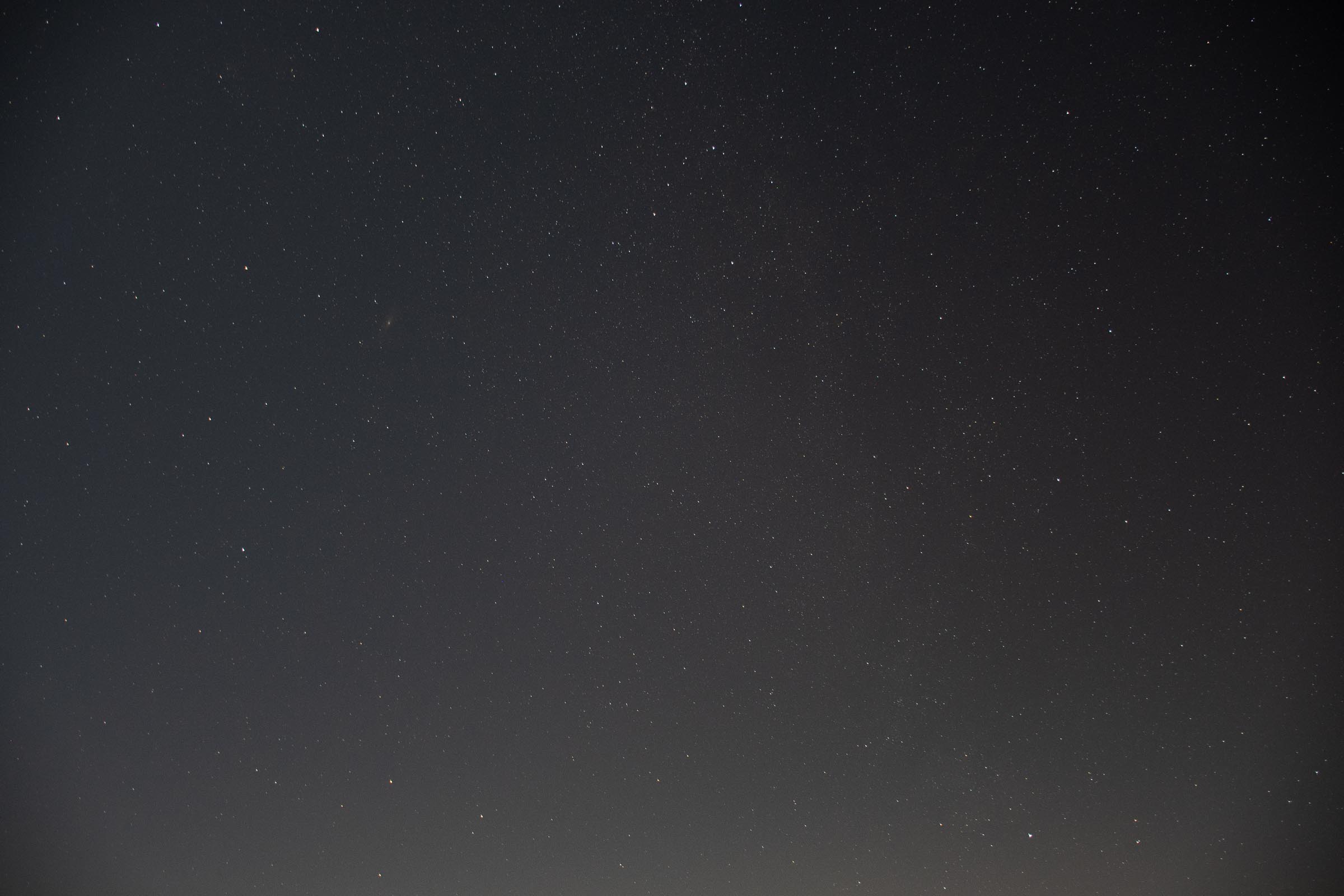
Should you buy the Nikon D7500?
Anyone seeking out a feature-rich DSLR full of high-end features without the high-end price tag should go for the Nikon D7500. It feels and handles much like the full-frame Nikon bodies and only shrinks back on build quality where it has to, such as in the single memory card slot and autofocus point density.
Overall, it's a well put together crop sensor body with a sturdy construction and is comfortable to use for both beginners and those wanting to push their photography a little but don't want to buy into the full-frame realm where lenses and accessories are more expensive.
If this product isn't for you
If you've decided that a crop sensor Nikon body is your thing but lean more towards wildlife, sports, or action photography then you may want to consider the Nikon D500. It too is a DX Nikon body and has the same image sensor and processor but features a vastly improved autofocusing system that covers more of the frame and is ideal for fast-moving subjects.
Those wanting to go full-frame without spending much more may want to seek out the Nikon D780, an entry-level FX DSLR that takes the D7500 specs and ramps them up much higher. However, if it's mirrorless that appeals then it's the Nikon Z50 which is the D7500's mirrorless counterpart here, with the same stills and video resolution but with an improved 11FPS continuous burst speed.
Join our Space Forums to keep talking space on the latest missions, night sky and more! And if you have a news tip, correction or comment, let us know at: community@space.com.
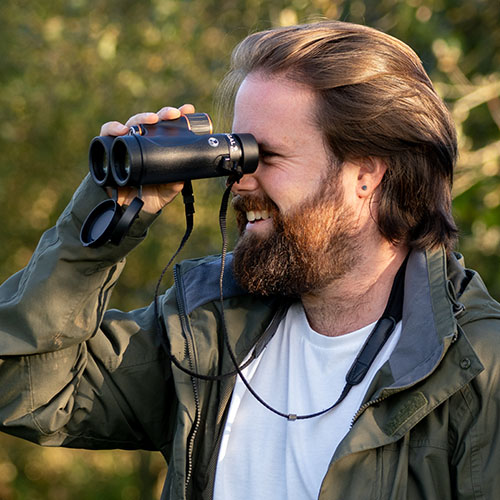
Jase Parnell-Brookes is the Managing Editor for e-commerce for Space and Live Science. Previously the Channel Editor for Cameras and Skywatching at Space, Jase has been an editor and contributing expert across a wide range of publications since 2010. Based in the UK, they are also an award-winning photographer and educator winning the Gold Prize award in the Nikon Photo Contest 2018/19 and named Digital Photographer of the Year in 2014. After completing their Masters degree in 2011 and qualifying as a teacher in 2012, Jase has spent the last two decades studying and working in photography and publishing in multiple areas, and specializes in low light optics and camera systems.
